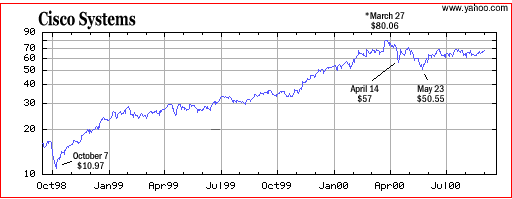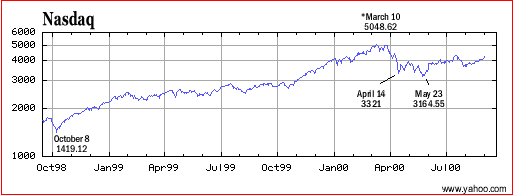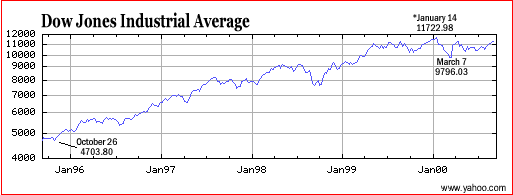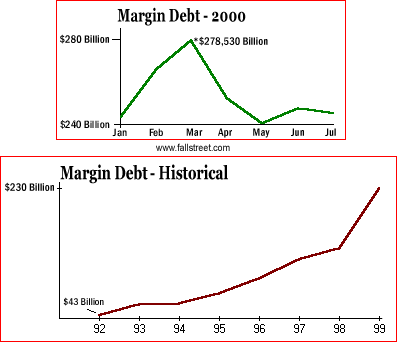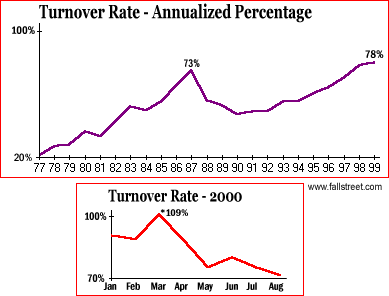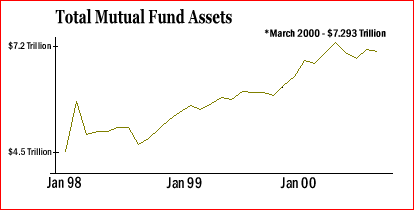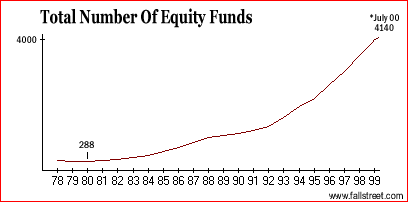Sept 18 - Peaked Peaks?
By Brady Willett & Todd Alway
"The real losses occur in the second
stage down, after investors who bought stocks on reflex get discouraged. That's when liquidity dries up and there's a lack of interest."
Farrell of Merrill Lynch
When observing the markets it is easy to become consumed with analytical predictions and the daily bombardment of economic statistics; each trading session a new story
breaks, an economic statistic is unveiled or reassessed, and sectors thrash in opposite directions seemingly without rhyme or reason. It is in this way that many financial fortunes have been made and
lost. Simply put, short-term leveraging of assets makes one subject to the incalculable short-term fluctuations of daily market life. A storm off the coast of Florida, a strike in Europe over rising
oil prices, or even a slow news day are enough to trigger the market in unpredictable directions. In fact, what the daily activity and static quantitative figures can not comment upon is the long-term
psychological state of the market. Certainly one can proffer an opinion on market psychology based upon the daily flows, but this opinion is transient; it must change once a new report is wired or a new opinion is
learned and appreciated. Accordingly, it offers little to guide the investor interested in long-term market movements and, presumably, long-term portfolio gains. That said, based upon the long-term
flows, what the present equity environment may be telling us is that regardless of the daily plays, the grand scheme of the game may already have been altered.
Looking At The Peaks
Both of the major markets have reached record highs this year.
Nevertheless, they are currently in a holding pattern in which lower lows and lower highs have become definitive of the parameters of market movement; a typical bear market by most definitions.
High investor
expectations heading into 2000 are themselves a significant indicator of a latent climate of unfulfilled expectations in which investor impatience with a lack of growth in paper wealth threatens to turn the
current drying-up in the liquidity stream entering the market into a raging torrent of capital exiting the market for other venues. It doesn't help the situation when these investors are forced to
stare up at market peaks which in all likelihood will not be re-attainable by years end. Add to this a
decline in earnings growth estimated to last until the second quarter of 2001
and the situation for the investor may seem dire indeed. The average investor expected 20% market gains in 2000 and is now staring at, in many cases, a 20+% rally just to break even.
The peaks are flickering out of reach as investors grow more and more impatient...
Two other statistics whose peaks may have been met in 2000 are turnover rates and margin debt.
Each comments on the state of the market; turnover rates by displaying periods of intense or flaccid
trade and margin rates by commenting on investor leveraging tolerances. For instance, after the
1987 crash it took more than a decade for turnover rates to reach their pre-crash levels, and margin debt, if it suffers another fall by January 2001, will have fallen year over year for the first time in more
than a decade.
More possible peaks to consider include mutual fund assets and the creation of equity funds. Mutual
fund assets reached a concurrent peak with the Nasdaq back in March, yet the creation of equity funds continues at a torrid pace. This equity fund creation, needed to feed demand, reflects the
long-term behavior of the market more gradually; hence a long downturn after maximum girth is reached is typical. Such was the case back in 1929 (investment trusts) and in the 1960s (gogo mutual funds).
It is easy to become pre-occupied with the daily statistics and short-term commentary immediately
impacting the markets, but the larger part of the story can be told in the long-term flows; in the peaks and what each represents to long-term investor sentiment. As the markets reflex towards a
more habitual trading atmosphere the most important thing to consider is how the majority of investors will perceive the future state of equity growth. My guess is that this perception will not be
very optimistic. That being the case, rather than representing a temporary slow-down in the growth of equity valuations, current market conditions threaten to make temporary bearish sentiments into
an entrenched bearish reality.
|
